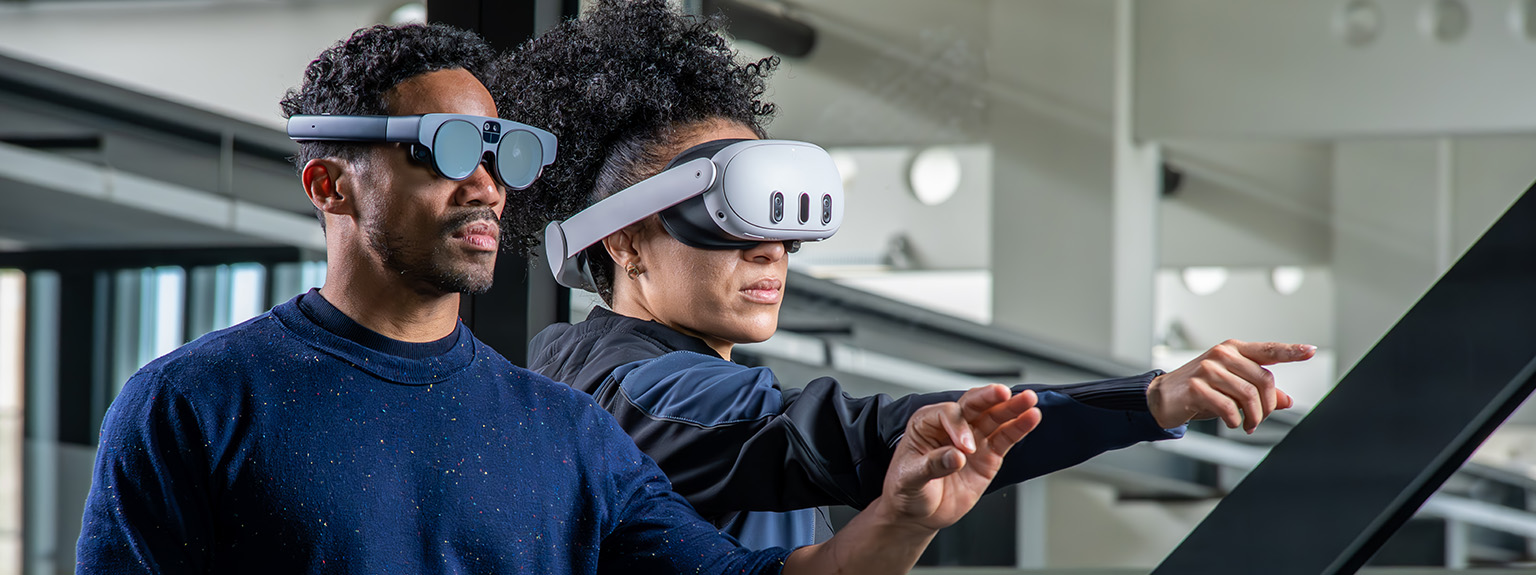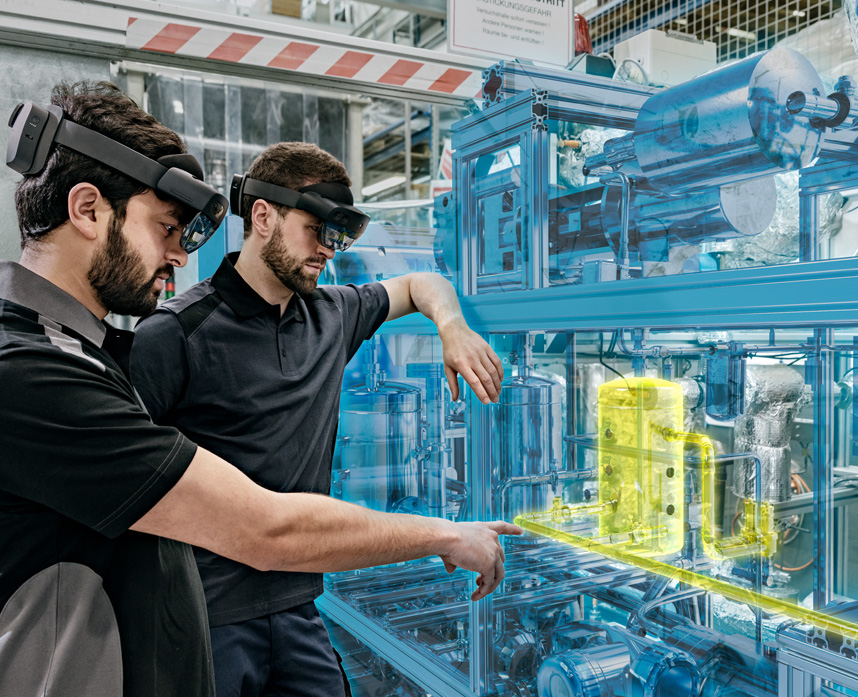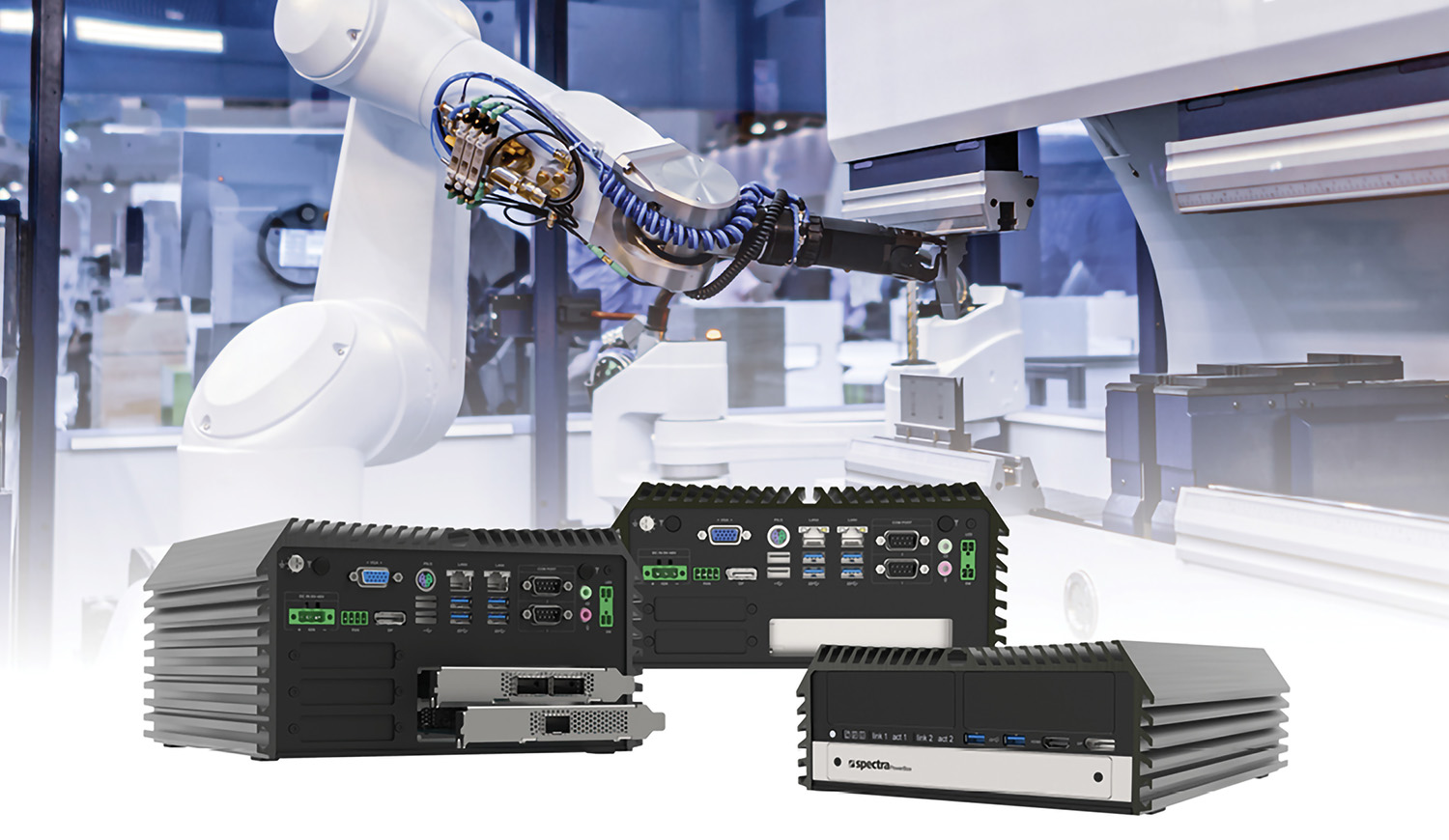
Powerful Solutions for Machine Vision Applications
Spectra PowerBox 3000F: Industrial Box-PC Series with Alder Lake Processors
Quality control through component inspection and object identification and tracking in production processes are
just two examples of machine vision applications in industrial environments. Embedded PCs such as the Spectra
PowerBox 3000F with high computing power and ultra-fast interfaces for modern camera systems play a key role in
these applications.
Read More

Ultra Power in Mini-ITX format
Spectra LV-6716H7: Embedded board for compact image processing solutions
“We need a compact solution to capture and process image data on the machine.” Image processors, AI users and
IPC manufacturers know these or similar requirements well enough. And the solution usually starts with the
selection of the right computer platform.
Read More

Single-board computer with AMD processors
AMD makes its way into single-board products from ICP Deutschland. The company has expanded its portfolio with
two powerful AMD solutions. The IMB-V3000 is a Micro ATX mainboard that is equipped with a built-in AMD Ryzen
Embedded V3000 processor. The IMBAX-SP6 is an industrial ATX mainboard that was developed specifically for
server applications. Both single-board computers can be used, for example, in industrial automation, vision
applications, medical imaging and traffic monitoring.
Read More

Ideally suited for industrial environments
Spectra PowerBox 630: Powerful and flexible box PC
In industrial sectors such as automation, logistics and manufacturing, high temperatures, vibrations, dust and
dirt are part of everyday life. They require reliable box PCs that can run under industrial conditions, monitor
production processes and control machines efficiently.
Read More

Maximum expandability and highest computing power
Spectra WS-6000 series: High-end workstation for image processing, data analysis and AI applications
Companies working in areas such as image processing, machine learning, simulations and data analysis have
special requirements for the industrial computers they use. These must not only offer high computing power but
must also be flexibly expandable and extremely reliable.
Read More

Vision - the world's leading trade fair for machine vision
Experience innovative technologies such as artificial intelligence, embedded vision and the close integration of image processing and automation
image processing and automation - for the smart factory of tomorrow and for constantly growing non-industrial applications.
Read More
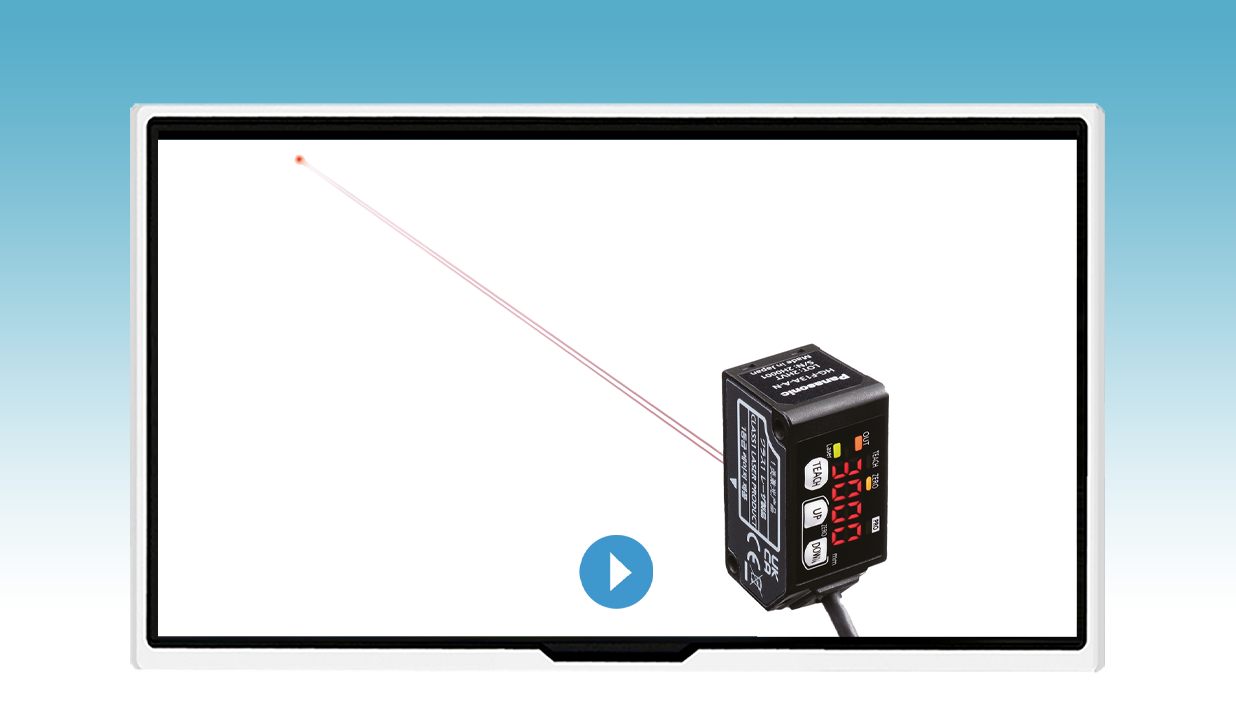
HG-F1 – Laser measurement sensor for ranges of up to 3 m
The HG-F uses TOF technology to reliably detect at distances of up to 3 m. This means that the sensor can also
be installed at some distance from the object to be measured so as not to disturb employees. The movement radius
of cobots or robot arms can also be kept clear in this way.
Read More

3D CAD Visualisation in AR and VR
XR engineering software Hololight Space supports Magic Leap 2 and Meta Quest 3
At Hannover Messe, the AR/VR expert Hololight will be showcasing
the new version of its 3D CAD visualisation software Hololight Space.
Read More
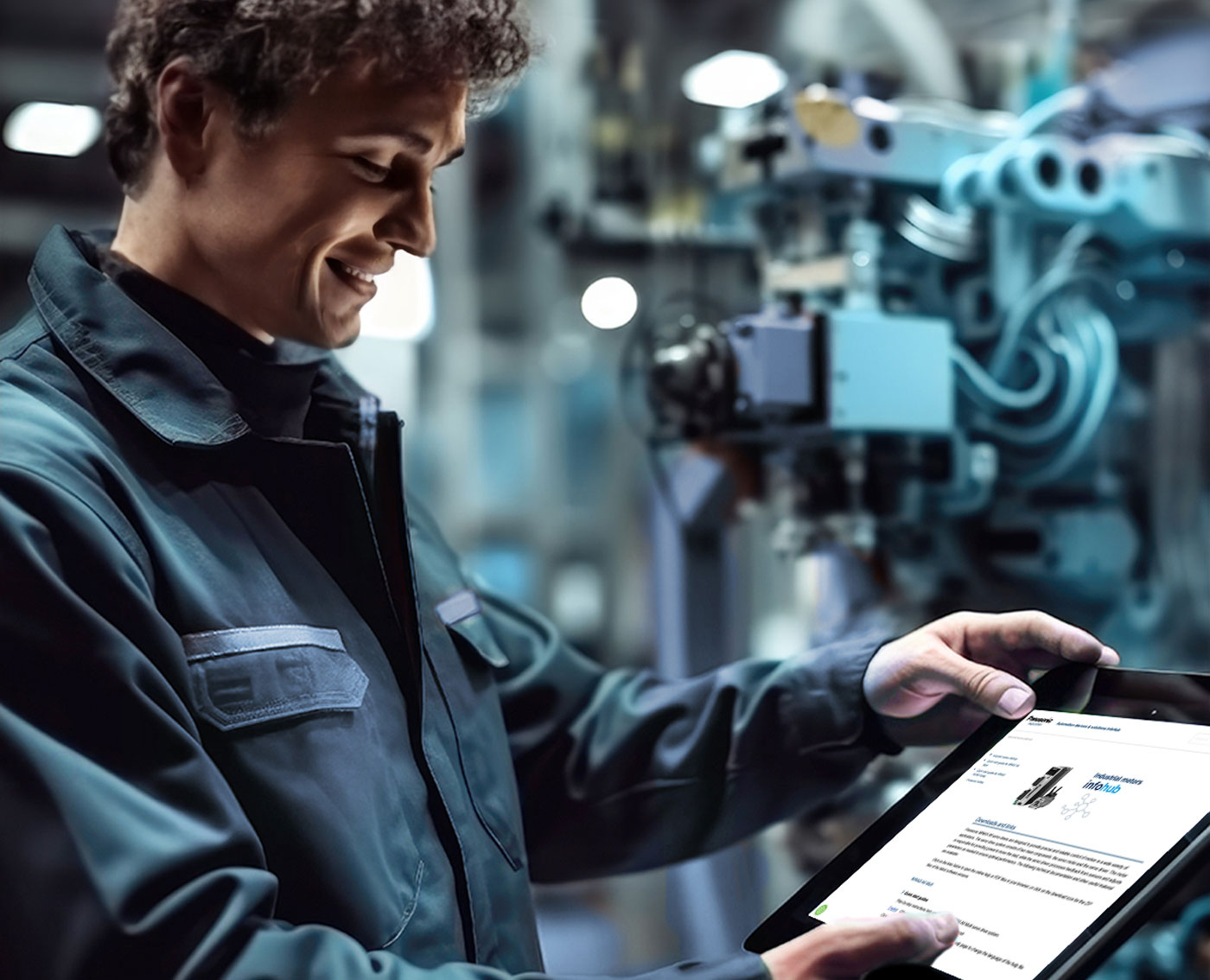
Automation solutions from a single source
From laser measurement sensors and servo drives to laser marking systems: Panasonic Industry offers innovative,
high-precision products and customized services for a wide range of industries.
Read More

Bin picking made easy
The Zivid Two L100 industrial 3D camera enables more productive bin picking with deeper reach, enabling extended
grippers to empty larger, deeper bins.
Read More

Factory Planning with Augmented Reality
Future Technology used in Everyday Work. CAD models as holograms. Modifiable and collaboratively editable.
Augmented Reality (AR) is expected to revolutionize workflows in factory planning. At BASF, the world’s largest
chemical company, the use of AR already shows great potential.
Read More

Contactless angle measurement with camera‑based encoders
Visevi Robotics offers novel vision-based encoders ViseJoint now for generic angular measurement applications
without sensors on the joint. Measurement of one or multiple joints is performed remotely, using a computer
vision software and a camera that looks onto the joints from a distance. The solution can be used for smart
robots.
Read More

Robotron and Kontron simplify computer vision
Many manufacturing companies still find it difficult to get started with Artificial Intelligence (AI), not least
because of the complex hardware selection. In the new AI workstation, Robotron and Kontron now combine two of
their innovative solution approaches for the uncomplicated and fast application of computer vision. The
multi-purpose AI workstation enables training, execution and inference of algorithms for a wide range of models
and frameworks. The standardized approach covers up to 90...
Read More

Industrial Panel PC in IP66/69K stainless steel housing
Spectra-Panel Z-Series meets requirements of the food, pharmaceutical and medical industries.
Hygiene requirements are particularly high in the food, pharmaceutical and medical industries. Since the spread
of particles, germs and other contaminants must be prevented at all costs, materials are used in the production
process whose contamination potential is as low as possible.
Read More

The power pack for automation
Spectra PowerBox 3000C – Mini‑PC with Coffee Lake Power. High computing power, extensive expansion options as well as the compact design have made the mini PCs of the
Spectra PowerBox 3000 series a real 19-inch alternative since the first generation. Due to these
characteristics, they are recommended, for example, for use in machine and system control.
Read More

Image processing in a new dimension
Spectra PowerBox 5000: Scalable high-end GPU computing system. Modern processes in industrial AI and machine vision are closely linked to image processing. This requires
industrial PC systems with CPU and GPU performance large enough to process the tasks in real time.
Read More

AI plug-in card with Coral Edge TPUTM for retrofitting
With the Mustang-T100-T5 ICP Germany expands its portfolio of AI accelerator cards and brings another
possibility to extend existing systems with AI functionalities.
Read More

Future-proof visualisations for IIoT applications
Machinery and plants as well as production processes generate a continual flow of data. Companies that are able
to generate added value from this data will be able to enjoy success in the future. However, the large amount of
generated data must be easily accessible to the machine operator via a HMI (Human Machine Interface). With the
u-create PROCON-WEB SCADA software tool and PROCON-WEB Embedded System, Weidmüller provides visualisation
solutions with...
Read More

AI accelerator cards for AIoT edge computing
At the edge, the use of GPU-based systems for AI computing is usually not practical due to the physical size of
the inference system, the high-power consumption and the unfavourable price-performance ratio. The Mustang AI
accelerator card series from ICP Germany offers new solutions for edge computing in the field of Artificial
Intelligence of Things (AIoT).
Read More

Ready for AI
Powerful, freely programmable smart cameras with NVIDIA Jetson modules. Baumer presents the AX smart cameras,
its first industrial-grade smart cameras that combine the market-leading NVIDIA Jetson modules with powerful
Sony CMOS sensors to create a compact, flexible, and freely programmable image processing platform for
AI‑applications.
Read More

Small pixels for higher image quality
Compact 29×29 mm industrial cameras with Sony Pregius S sensors up to 24 MP. Baumer is expanding its CX series
with the 4th Sony CMOS sensor generation Pregius S with up to 24 megapixel resolution. Thanks to a pixel size of
mere 2.74 µm and backside illumination pixel architecture, the camera has a very compact design (29 × 29 mm) and
offers very high resolutions with excellent image quality and improved sensitivity for stable image evaluations.
Read More

Image processing in a new dimension
Spectra PowerBox 5000: Scalable high-end GPU computing system. Modern processes in industrial AI and machine
vision are closely linked to image processing. This requires industrial PC systems with CPU and GPU performance
large enough to process the tasks in real time.
Read More

Human Digital Twin: The digital counterpart to the human worker
Wearables from ProGlove make humans a driving force of Industry 4.0 and digital transformation. The Digital Twin
is a digitized model that maps the physical characteristics of a production environment as well as the
processes. But this mapping has its limitations, as it only includes data from machines and not from humans. At
the same time, human employees will continue to play an important role in the Fourth Industrial Revolution, also
known as Industry 4.0. The challenge lies in combining the...
Read More

Cameras, image sensors, photodiodes based on InGaAs
Hamamatsu Photonics provides InGaAs solutions covering the visible (VIS), near infrared (NIR), and short
wavelength infrared (SWIR) regions. Our solutions fulfill different applications including spectrometers for
spectrometry, scientific cameras for microscopy, and machine vision for industrial imaging. Also, we provide
driver modules and evaluation boards to decrease your design time. Customizations are available for specific
applications and requirements.
Read More 
